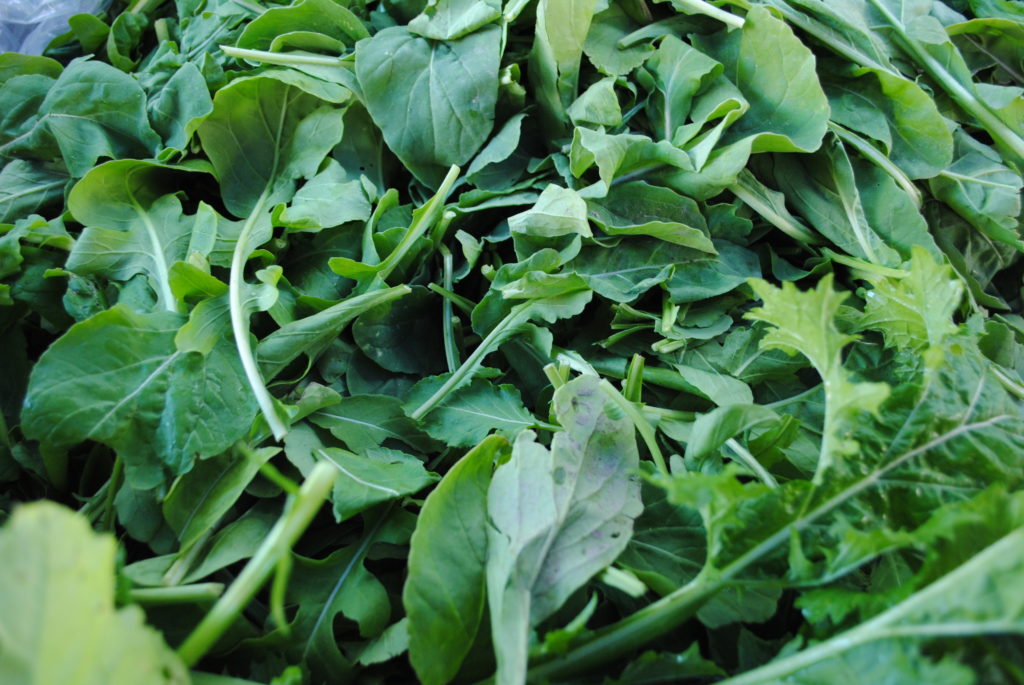Spinach: Healthful or Harmful?
February 23, 2007

At the Ferry Plaza Farmers Market right now, shoppers can find many varieties of tasty, succulent spinach. The leafy green thrives in mild winter weather and can also withstand the freezing temperatures we’ve experienced this season. But some shoppers regard spinach warily: is it the extraordinarily healthful superfood our mothers touted, or the dangerous, contaminated crop that has made numerous headlines? It turns out that spinach deserves neither its fame nor its infamy.
Spinach, cultivated by humans for over 2500 years, is undoubtedly a healthful food: it is full of iron, calcium, fiber, and vitamins A and C. The green also contains folic acid, lots of chlorophyll, and antioxidants. The truth, though, is that spinach is no more nutrient-packed than its dark leafy green counterparts like kale, arugula, collards, dandelions, and chard. And unfortunately, if it is grown conventionally, spinach may contain unwanted toxic chemicals used by humans to protect it from pests and disease. As Jeff Cox points out in his Organic Cook’s Bible “Because spinach is a heavy feeder, it will absorb an excessive amount of whatever is in the soil—pesticides, fungicides, and chemical fertilizers as well as nutrients.” This could be why spinach has earned a spot on the Environmental Working Group’s dirty dozen—a list of 12 crops that have the highest pesticide load.
In the past year, spinach has certainly gained a dirty reputation. E. coli outbreaks in September of 2006 led to a nation-wide spinach scare. With the drop in spinach sales that resulted, one might think that there is something inherently unsafe about the green. But spinach itself is not dangerous at all—handling, contaminated irrigation water and animal feces are the real risks. A dangerous strain of E. coli could just as easily have tainted any other raw green in the industrial food system.
The Western Growers Association, an industry group of large California and Arizona farms, is proposing regulations aimed at increasing the safety of raw leafy greens in the food system. Unfortunately, however, the proposal as it is written does little to address the most likely causes of the contamination and may make vegetable production prohibitively expensive for small farms. Carol Ness reported on it in this week’s San Francisco Chronicle Food Section. The Community Alliance with Family Farmers thinks the proposal is an over-reaction and is mobilizing farmers to oppose it.
The next time you crunch into a forkful of spinach fresh from the farmers’ market, enjoy the green for what it is: a delicious, nutritious food. It won’t give you Popeye’s unbounded energy and strength, and it’s nothing to be afraid of.
Topics: Nutrition, Vegetables
